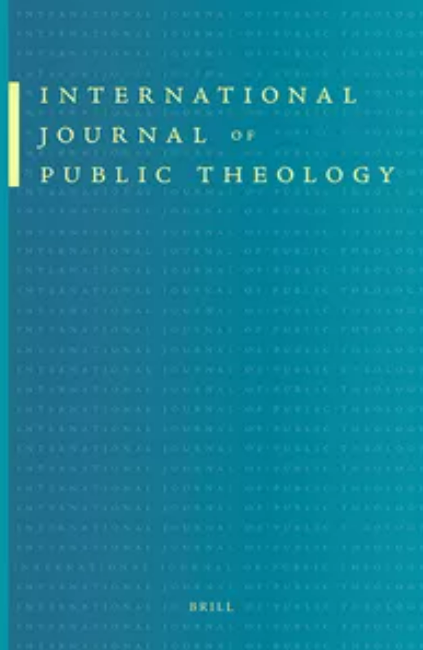3대에 걸쳐서 하퍼 가문 선교사 8명이 총 66년 간 한국에서 활동했다. 1920년에 한국에 온 조셉 하퍼와 그의 아내(애니스) 및 1922년에 온 누나(마거릿)는 목포에서 전도자와 교육자로 일평생 일했다. 해방 후 조셉과 애니스의 아들 조 B. 하퍼와 콩고 선교사의 딸인 아내 도로시는 전주를 중심으로 전북에서 그들의 부모가 목포에서 한 일과 유사한 순회사역을 수행했다. 딸 마디아(메리)는 중국 선교사 자녀 G. 톰슨 브라운과 결혼하여 목포와 광주의 교회와 신학교에서 활동했다. 조와 도로시의 딸 앨리스 루스 하퍼는 광주에서 1970년 말부터 이듬해까지 짧게 선교사 자녀를 가르치는 교사로 사역했다. 특히 2세대 대표자 조 B. 하퍼와 아내 도로시는 1986년에 완전히 은퇴할 때까지 한국을 지키며, 남장로회 한국 선교의 마지막 촛불을 직접 끄고 귀국했다. 본 연구를 통해 하퍼 가문의 한국 선교활동의 몇 가지 특징이 드러난다. 첫째, 지역 순회전도가 이들 모두의 공통 유산이다. 선교사 가문의 개척자 조셉 하퍼와 아내는 1920년에 입국한 후 32년 간 목포를 중심으로 전남 서부 지역 순회전도사로서 활동했다. 유니언신학교에서 박사학위를 받을 만큼 학구적 열정이 컸음에도, 3년 미만의 신학교 교수활동을 제외하고는, 내내 목포와 주변 시골에서 순회전도자로 활동했다. 누나 마거릿도 1922년에 한국에 온 후 1957년에 은퇴할 때까지, 정명여학교를 중심으로 오직 목포에서만 살고 활동했다. 해방 후에 활동한 2세대 조 B. 하퍼도 전주를 중심으로 전북 내륙 오지와 산지에서 교회를 개척하고 심방하고 성례를 집행하는 일에 전적으로 몰두한 순회전도자였다. 두 번째 특징은 하퍼 가문의 전통적이고 보수적인 신앙이다. 전통적인 해외선교에 대한 미국 학계와 언론의 비판이 휘몰아친 1920-1930년대 논쟁에도 조셉 하퍼를 비롯한 남장로회 선교사들은 거의 요동치 않는다. 하퍼의 1935년 유니언신학교 박사학위 논문은 이런 보수성의 증거다. 1920년부터 1986년까지, 66년에 이르는 선교사 활동기에, 한국 정치사에서 일어난 요란한 변화와 혼란에 대해 하퍼 가문 선교사들이 거의 아무런 발언을 하지 않은 것도 이런 보수성의 전형이라 할 수 있다. 셋째, 결혼과 직업을 통한 남장로교 가문 유산 계승에 충실했다. 남장로교 가정과 교회에서 자라다가 교단 배경 대학에 다니고, 같은 신앙과 소명을 가진 학교와 교회, 선교회에서 만나 배우자가 되고, 같은 소명으로 1세대, 2세대, 3세대 한국 선교사가 되었다. 벨-린턴 가문과 함께, 하퍼 가문은 이런 남장로회 선교사 전통을 대표하는 전형이다. 넷째, 아주 선명하지는 않지만, 1세대 선교사들과 2세대 선교사들 사이에는 미국 및 한국 상황의 변화에 따른 권위와 영향력의 차이가 어느 정도 있는 것으로 보인다. 1세대 조셉 하퍼가 2세대 조 B. 하퍼보다 지역에 더 영향력을 발휘했던 것으로 보인다. 해방 후에는 외국인 선교사가 한국인 기독교인을 이끄는 지도자가 아니라 협력자 역할을 한다. 다섯째, 하퍼 가문은 순회전도자라는 1차 유산 외에도, 선교행정가와 여성교육자 유산도 남겼다. 특히 브라운의 선교행정가 유산은 독보적이다.
Eight missionaries from three generations of the Hopper family served in Korea for a total of 66 years. Joseph Hopper, his wife (Annis), who came to Korea in 1920, and his sister (Margaret), who arrived in 1922, spent their lives as evangelists and educators in Mokpo. After Korea's 1945 liberation from Japan, Joseph and Annis' son, Joe B. Hopper, and his wife Dorothy, the daughter of a Congo missionary, carried on an itinerant ministry in Jeonbuk, mainly in Jeonju, much like their parents' work in Mokpo. Daughter Madia (Mary) married G. Thompson Brown, the child of Chinese missionaries, and they worked in churches and seminaries in Mokpo and Gwangju. Joe and Dorothy's daughter, Alice Ruth Hopper, ministered briefly in Gwangju as a teacher of missionaries' children from late 1970 to the following year. Notably, second-generation representative Joe B. Hopper and his wife Dorothy remained in Korea until their full retirement in 1986, when they returned home to blow out the last candle of the Southern Presbyterian Korea Mission. This study reveals several characteristics of the Hopper missionary family's work in Korea. First, local itinerant evangelism is a common heritage for all of them. Joseph Hopper, a missionary pioneer, and his wife arrived in Korea in 1920 and spent the next 32 years as itinerant evangelists in the western part of Jeonnam, mainly in Mokpo. Although he was scholarly enough to earn a doctorate from Union Theological Seminary, except for less than three years as a seminary professor, he spent his entire career as an itinerant preacher in Mokpo and the surrounding countryside. Her sister Margaret also came to Korea in 1922 and lived and worked exclusively in Mokpo, centered on Jeongmyeong Girls' School, until her retirement in 1957. The second generation, Joe B. Hopper was also an itinerant evangelist who devoted himself entirely to church planting, evangelizing, and administering the sacraments in the backcountry of Jeollabuk-do. The second characteristics is the Hopper family's conservative faith. Joseph Hopper and other Southern Presbyterian missionaries were largely unmoved by the controversies of the 1920s and 1930s when American academia and the media criticized traditional foreign missions. Hopper's 1935 doctoral dissertation at Union Theological Seminary is a testament to this conservatism. It is also typical of this conservatism that the Hopper family missionaries had little to say about the tumultuous changes and turmoil in Korean political history during their 66 years of missionary activity from 1920 to 1986. Third, they were faithful to their Southern Presbyterian heritage. They grew up in Southern Presbyterian homes and churches, attended denominationally affiliated colleges and universities, met and married in schools, churches, and missions with the same faith and calling, and became first-, second-, and third-generation missionaries to Korea. Along with the Bell-Linton family, the Hoppers are typical of this tradition of Southern Presbyterian missionaries. Fourth, although it is not very clear, there appears to be some difference in authority and influence between the first and second generation missionaries as the American and Korean contexts changed. The first generation, Joseph Hopper, seems to have been more influential in the region than the second generation, Joe B. Hopper. After liberation, foreign missionaries became helpers rather than leaders of Korean Christians. Fifth, in addition to their primary legacy as itinerant evangelists, the Hoppers also left a legacy of missionary administrators and educators for women.







